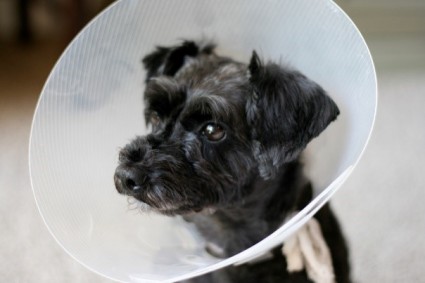

Your pet should be fasted for 12 hours prior to admission for surgery, water is fine until then but NO breakfast!
Make sure you know whether or not you should still be giving your dog any medication they are currently taking. Some medications can affect the anaesthetics or medications we use and cannot be taken whilst others are important to continue using.
If your pet is going to require stitches they cannot be bathed or made wet until they are removed so you may wish to give them a bath beforehand.
Admission time for surgery is between 8:00am and 8:30am. Upon arrival, you will be asked to provide a contact phone number for the day and will need to sign an admission form to provide your consent. Your pet will be admitted by their dedicated surgical nurse and you will be asked a few questions such as:

Once admitted for surgery, the nurses give them a general health check or “obs”.
If a pre-anaesthetic blood test has been requested it will be performed with the results taking just over 10 minutes. Providing that the test has shown no abnormalities, pre-anaesthetic medications are administered. Such medications are used to provide a light sedation resulting in relaxation and pre-emptive pain relief.
Cats are given a box house to hide in, a soft blanket, a kitty litter tray and we use a spray called Feliway to help reduce stress.
Dogs are given a soft blanket, a cuddly toy and we use a spray called Adaptil to help reduce stress.
Prior to anaesthetic, we fix an intravenous catheter (or cannula) into one of their front legs. This will require us to clip a patch of fur. This gives us access to administer medications and allows intravenous fluids therapy. Intravenous fluids (or a “drip”) stabilise blood pressure, maintain hydration and help to flush out anaesthetic.
An induction anaesthetic is given which makes them sleepy enough that we can place an endotracheal tube in their throat. This throat tube keeps their airway open for us to deliver oxygen and gaseous anaesthetic and prevents the aspiration of fluids.
During surgery, they are observed closely by an experienced nurse, the veterinary surgeon and monitoring systems. We have the ability to monitor their heart rate, breathing rate, blood oxygen saturation, blood pressure and temperature. They are placed on a heating mat, have hot water bottles, a blanket, socks and an IV fluid line warmer to conserve their body temperature.
Once they have recovered from surgery, they are placed back in their cage where they are continually monitored with warming aids. They are taken outside for a walk for an opportunity to go to the toilet and offered food and water. We will then contact you in regards to a discharge time.
The time they can go home varies on the procedure they had, how quickly they recover and if more medication is required. Usually, they are ready to be discharged from hospital between 2:00pm and 6:00pm.
The nurse will talk you through how they went today, provide any relevant paperwork and medication and outline home care instructions. You may also be required to book an appointment for a follow-up or suture removal.
A nurse will go through aftercare with you on discharge about the following points:
